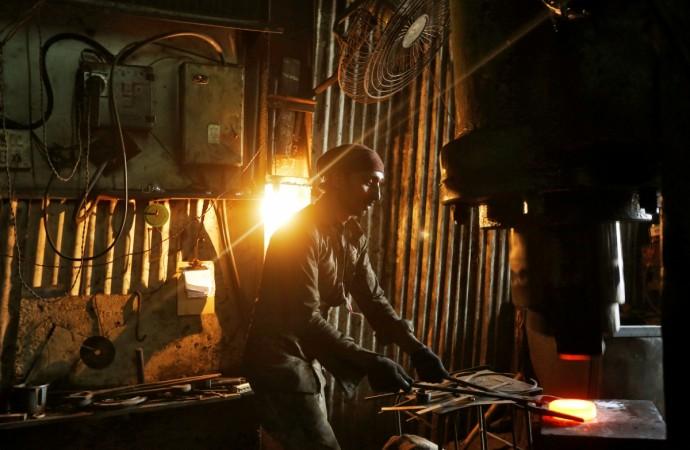
India likely retained the position of world's fastest growing major economy in the January-March quarter, surpassing China's growth of 6.8 percent, driven by gains in manufacturing and consumer spending.
The median in a Reuters poll on the latest quarter's annual growth INGDPQ=ECI was 7.3 percent, the best pace since July-September 2016, the quarter before the government unexpectedly scrapped high-value currency notes.
Forecasts for January-March ranged from 6.9 to 7.7 percent.
The government will release GDP data on Thursday around 1200 GMT. On Monday, Economic Affairs Secretary Subhash Chandra Garg said growth in Asia's third largest economy was expected to grow 7.3-7.5 percent.
The data, combined with April's higher annual inflation pace of 4.58 percent, could put pressure on the Reserve Bank of India to raise interest rates next week after keeping them on hold for a fourth straight meeting last month.
Prime Minister Narendra Modi, who is expected to seek a second term in 2019 general elections, has launched a nation-wide goods and services tax and allowed foreign investment in defence and e-commerce businesses to boost economic growth.
However, a botched implementation of the GST nearly scuttled India's growth prospects in the near term.
Economists said a rise in capital investment growth to near 9 percent in the last quarter of the 2017/18 fiscal year compared with 2.4 percent a year earlier indicated a pick-up in the private investments.
Yet banking credit, a main source for corporate borrowing, remained weak following a surge in bad loans, as banks have been reluctant to extend new loans. The 21 state lenders hold two-thirds of banking assets, and accounted for the bulk of the record $150 billion of soured loans in the banking sector in 2017.
Consumption, which accounts for nearly 70 percent of the $2.5 trillion economy likely remained firm, supporting economic growth as reflected in the higher sales of consumer durables and vehicles.
"Corporate sector results and the industrial production readings have been better than expected. Hence, the industrial sector could pull the GDP growth number up," said Tushar Arora, senior economist with HDFC Bank.
Growth is likely to get a boost from monsoon rains, which hit the southern state of Kerala a few days earlier than normal, potentially brightening the outlook for agricultural output.
RISING OIL PRICES
The biggest risk India faces is rising crude oil prices LCOc1, which this month hit $80 a barrel, their highest since 2014.
India meets 80 percent of its oil needs from imports.
Prices of diesel and petrol surged to a record high last week, stoking opposition criticism of Modi's administration.
Higher oil prices have already pressured the rupee, near a record low last week and Asia's worst performer.
"Rising oil prices can weigh on the consumer demand and lead to higher borrowing costs for the government," Arora of HDFC Bank said.
The government's Economic Survey, issued in January, estimated that every $10 per barrel rise in global oil prices cuts growth by 0.2-0.3 percentage points.
Still, some analysts expect India's economy to grow more than 7 percent in 2018/19, helped by a normal monsoon and a pick-up in private investment.
The International Monetary Fund expects economic growth could reach 7.4 percent in 2018/19.
An Indian Finance Ministry official told CNBC on Monday that estimated growth in the last fiscal year, which ended on March 31, was 6.7 percent, below 2016/17's pace of 7.1 percent.
[ Source- Reuters]













